 He saw before him a building of black polished marble Ren Bull, 1912
He saw before him a building of black polished marble Ren Bull, 1912  Copyright Copyright 2008 by Dover Publications, Inc.
Copyright Copyright 2008 by Dover Publications, Inc.
Introduction and biographical notes copyright 2008 by Jeff A. Menges
All rights reserved. Bibliographical Note This Dover edition, first published in 2008, is an original compilation of illustrations from the following sources: The Arabian Nights , Will and Frances Brundage (Raphael Tuck & Sons, London, Paris, and New York, 1893); The Arabian Nights Entertainments , H. J. Ford (Longmans, Green, and Co., London, New York, and Bombay, 1898); The Arabian Nights Entertainments , Thomas B. Dalziel and A.
W Cooper (George Routledge and Sons, Ltd., London, 1902); The Arabian Nights: Their Best-Known Tales, Maxfield Parrish (Charles Scribners Sons, New York, 1909); The Arabian Nights , Ren Bull (Bell and Cockburn, Toronto, 1912); Stories from the Arabian Nights , Edmund Dulac (Hodder and Stoughton, London, 1907) and Sindbad the Sailor & Other Stories from the Arabian Nights, Edmund Dulac (Hodder and Stoughton, London, 1914); The Arabian Nights , Charles Folkard (A. & C. Black, Ltd. London, 1913); The Story of Prince Ahmed and the Fairy Perie Banou, Charles Robinson (Gay and Hancock, London, 1913); The Arabian Nights Entertainments, Milo Winter (Rand McNally & Company, Chicago and New York, 1914); The Arabian Nights Entertainments , Louis Rhead (Harper & Brothers, New York and London, 1916); and Aladdin and bis Wonderful Lamp: In Rhyme , Arthur Ransome, Illustrations by Thomas Mackenzie (Nisbet & Co., London, 1920). NOTE: Caption punctuation varies according to the original source. Menges. p. cm. 9780486139036 1. 9780486139036 1.
Illustration of booksGreat Britain19th century. 2. Illustration of booksUnited States19th century. 3. Illustration of booksGreat Britain20th century. 4.
Illustration of booksUnited States20th century. 5. Arabian nightsIlllustrations. I. Menges, Jeff A. 11501 FOR COLEMAN  The Arabian Nights is more generally loved than Shakespeare... 11501 FOR COLEMAN
The Arabian Nights is more generally loved than Shakespeare... 11501 FOR COLEMAN  The Arabian Nights is more generally loved than Shakespeare...
The Arabian Nights is more generally loved than Shakespeare...
No human face or voice greets us among [this] crowd of kings and genies, sorcerers and beggarmen. Adventure, on the most naked terms, furnishes forth the entertainment and is found enough. Robert Louis Stevenson INTRODUCTION T he mention of the Arabian Nights steers the mind away from mundane matters and everyday surroundings to visions of genies and flying carpets, caverns overflowing with treasure, and the tear-drop-shaped domes of Eastern lands: We immediately are transported to a realm of exotic legend. That journey is the purpose of the tales illustrated in this captivating book, a journey for both the subject of the tale-within-the-tale framework, and for the modern reader. Storytelling also provides the context for these narratives: an exotic and dangerous setting in which the lovely, ingenious Scheherazade spins out one-thousand-and-one tales for her husband, the Sultan, who is bent on his wifes eventual execution. As long as the Sultan is entertained by the talesand desires to hear just one morethe clever Scheherazade is spared.
This strange and wonderful escape to distant magical lands attracted eighteenth- and nineteenth-century European readers to these tales, which still are cherished today.  When having brought into submission all the rest of my race
When having brought into submission all the rest of my race
Stories from the Arabian Nights, Edmund Dulac, 1907 Set in eighth-century Baghdad, the enchanting stories, and their ingenious framework, have continually captured the imagination of Western readers. The history of this collection of stories has roots that go back centuries; the sources for the material seem to be as numerous as the tales themselves. Professor Antoine Galland translated the bulk of the material we know as the Arabian Nights from Arabic into French in 1704 (the twelve-volume Les Milles et une Nuits ) . Notably, not only did Galland remove much of the poetry from the originalhe also excised segments that he believed to be unsuitable for the European reader. The translation was a tremendous success, as storytelling and fairy tales were major forms of entertainment for all ages, and this previously unknown material, set in a location as fantastic as the narratives, was eagerly received.
Gallands tales, and those that would emerge in later translations and interpretations, have provided an alternate canvas for some familiar stories and also have introduced to the Western world tales that seem to have no counterpart in our mythologies.  Frontispiece for the 1916 Harper and Brothers edition
Frontispiece for the 1916 Harper and Brothers edition
The Arabian Nights Entertainments, Frank Schoonover, 1916 During the late nineteenth century, a fascination with Eastern culture created a movement in the arts known as Orientalism, reflecting Englands strong colonial presence in India, Egypt, and Hong Kong. Global trade was flourishing due to improvements in transportation, and, in the publishing world, beautifully illustrated books could be produced and made available at a cost that placed them, for the first time, in the hands of more than a select few. The Arabian Nights offers creative possibilities for an illustrator that are nearly unmatched by other works. These are wild and inventive tales, with magic, the supernatural, and many sorts of imaginary beingsall the rich imagery that a visual storyteller could hope for. Sir Richard Burton, who translated a pioneering version of the tales into sixteen volumes in English, said, The marvelous imaginativeness of the tales produces an insensible brightness of mind and an increase of fancypower, making one dream that behind them lies the new and the unseen, the strange and the unexpectedin fact, all the glamour of the unknown.
What more could an illustrator hope for? Here, then, is a collection of many of the best visuals to ever accompany these stories, from some of the earliest illustrated printings in the West, to the influence of the Art Deco movement. Edmund Dulacs jewel-like colors, Ren Bulls confident line work, and Thomas Mackenzies stylish interpretations are included within, along with many images that have not been reprinted in three-quarters of a century or more. Like Gallands tales, the Arabian Nights offer an embarrassment of riches, one that is best shared. Jeff A. Menges
January 2008 Table of Contents
The plates Will and Frances Brundage THE ARABIAN NIGHTS, 1893 In the mid to late nineteenth century, the earliest color works to be printed on a commercial scale were produced through chromolithography. Not a direct reproduction, this technique relied on the interpretation by the lithographer to accurately reproduce the color effects of a painting by adding one color at a time to the image surface.
The works from this 1893 edition of The Arabian Nights use chromolithographyas does much of the work of Frances Brundage (18541937). A prolific and popular American illustrator, she was well known for her postcard and calendar work in the early twentieth century. Children were a particularly strong focus for her, both as an audience and as subject matter. In 1886 Frances married artist William Tyson Brundage (1849-1923), and his name shares the credit on more than one of the plates in this group. 
Next page
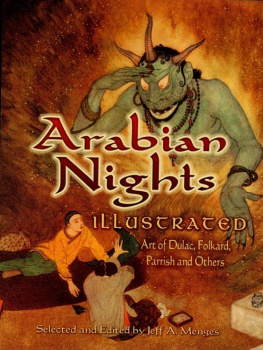
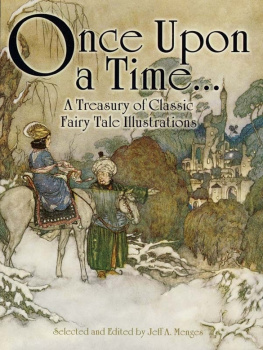
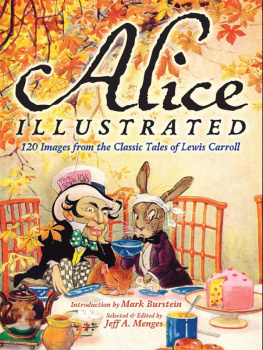
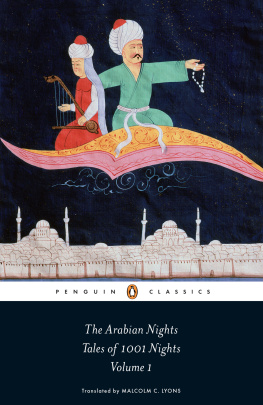

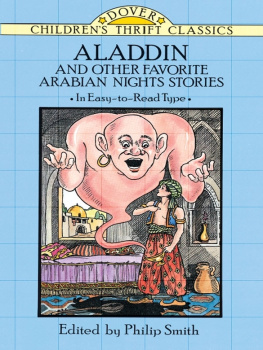
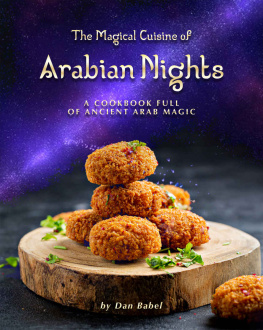
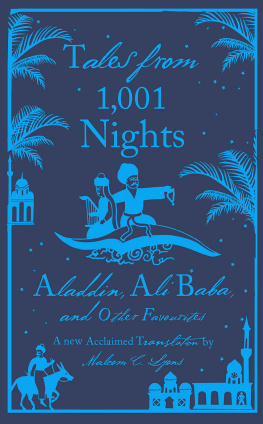


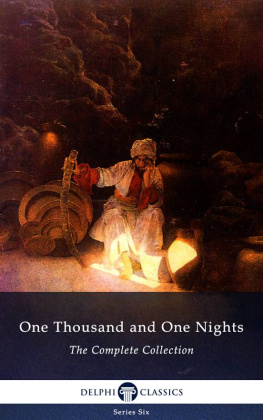


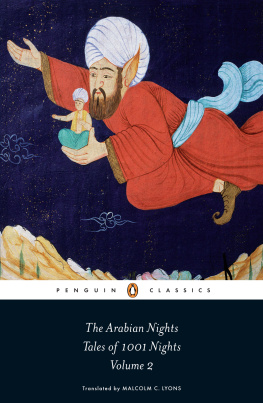
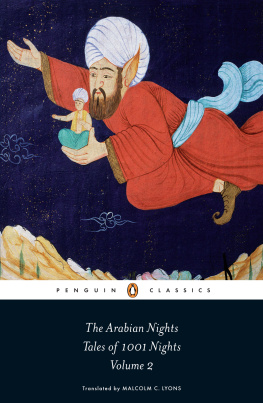
 He saw before him a building of black polished marble Ren Bull, 1912
He saw before him a building of black polished marble Ren Bull, 1912  Copyright Copyright 2008 by Dover Publications, Inc.
Copyright Copyright 2008 by Dover Publications, Inc. The Arabian Nights is more generally loved than Shakespeare... 11501 FOR COLEMAN
The Arabian Nights is more generally loved than Shakespeare... 11501 FOR COLEMAN  When having brought into submission all the rest of my race
When having brought into submission all the rest of my race Frontispiece for the 1916 Harper and Brothers edition
Frontispiece for the 1916 Harper and Brothers edition